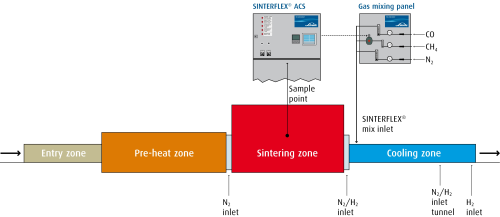
Improvements were achieved using Linde’s SINTERFLEX Atmosphere Control System (ACS). The system will be featured in Linde tabletop sessions and a commercial presentation at MIM 2015 in Tampa, FL in late February.
Megamet, using the advance control system from Linde reduced the standard deviation of carbon content in MIM parts, increased the number of parts in specification, eliminated rework/ decreased rejects due to carbon content and increased productivity, the companies say.
Carbon potential
‘Homogeneity and consistency in the furnace atmosphere are pivotal to the success of MIM manufacturing,’ said Bruce G. Dionne, who co-chaired MIM 2014. ‘The highest accuracy carbon control is achieved by regulating the carbon potential at the sintering temperature to the value that will lead to the desired final surface carbon concentration in the sinter body upon cooling. The SINTERFLEX atmosphere supply system maintains the low CO+H2 concentration atmosphere necessary to stabilize carbon potential.’
Dionne detailed similar findings on at the 2014 World Congress on Powder Metallurgy and Particulate Materials (PM2014) last June as General Manager of Megamet Solid Metals, Inc. The PM2014 presentation, entitled, “An Approach to Carbon Control of Sintering Furnace Atmosphere: Theory and Practice,” is published in Part 5 of the Proceedings of the PM2014 World Congress. The paper also reviews the causes of decarburization and the dynamics of measuring atmosphere carbon potential.

